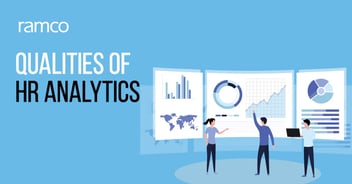With the entire humankind in the midst of a digital revolution, every minor to major aspect of life has gone digital - from entertainment to healthcare. With such disruptive changes happening all around us, can our workplaces be far behind? Yes, organizations are fast transforming into digital workplaces.
There are innumerable examples of digital workplace initiatives:
- Gig economy - the uberization of workforce, which is fast germinating into the concept of zero employee cost
- Anytime, anywhere access - mobility, which is pushing the workforce out of the four brick walls of the organization
- Robotics - automating repetitive, routine tasks, encouraging employees to take up more complex, creative work
- Cognitive, data-enabled, and context-specific support - employees can confidently take informed decisions based on memory-based automated inputs
The immense scope of a digital workplace is indeed incredible, but the transformation is hardly as smooth as it sounds. What are the challenges that organizations would have to scale to achieve this transformation?
- A complete remodeling of business models, processes, and even work culture
- Employee skill set requirements would also drastically change
- Looking for a one-size-fits-all solution, which does not exist
- A single-minded focus only on technology, ignoring employee engagement and processes
- Lack of proper feedback mechanisms and ownership definitions threatening to collapse the system
- Narrow goal definitions with an eye on immediate benefits rather than long-term values
- Underestimating the value of data in measuring performance against objectives
So what's the ideal approach to achieve an ideal digital workplace? A methodology that offers incredible scope for discussion and engagement, with the entire organization moving ahead as a team. Here's how you achieve this goal:
- Derive your organization-specific vision of a digital workplace: This stage answers the following questions - why do we need this transformation, what will our digital workplace look like, and what value will it bring to our business.
- Build the strategic roadmap: The complete blueprint for implementing your digital transformation determines how you will reach your organizational goals, tying in each area of expertise and defining the priority order of implementation, the leaders and enablers, and risk assessment.
- Ensuring employee engagement: Employees are at the heart of every organization; hence, without employee buy-in, any transformation effort would not bring in the desired results. The organization's HR team and champions should connect with the employees to motivate them.
- Starting from the foundation and moving ahead in clear stages: the organizational transformation must consider many factors:
- The need for new skill sets and a plan of action to hire the right personnel
- The processes, standards and guidelines that need revision
- The new structures that need to be put in place
- The employees who will be affected by specific changes
- The support and incentives that would encourage them
- Re-engineering existing processes: Process transformation comes a close second to employee engagement while creating a digital workplace. Identify routine, simple activities that follow a specific pattern, and automate these tasks. Employee skill sets can then be focused on dynamic, creative and non-routine activities.
- Simplifying access to information: Continued and open learning concepts support an easily searchable and shareable repository of information, which is crucial to ensuring effective knowledge transfer.
- Delivering effective data insights: Every organizational interaction delivers data that can provide clear feedback on the efficiency of the change management approach and employee buy-in
- Leveraging technology: Although most organizations focus only on technology to transform into a digital workplace, we recommend technology as the final rung of the ladder. Technology-enabled transition includes smart machines that improve work agility, mobile technologies, social media that encourages collaborative work, and cloud solutions. There are also ample opportunities in digital payroll. One can safely say, that true digital transformation is something that is definitely possible, if a structured approach, the right choice of tools and HR software and payroll software are put in place.
Organizational transformation to create a digital workplace is a humungous exercise that brings together the best of processes, technology, and human minds. All these endeavors are indeed worth the effort since at the end of the road lies the perfect technology-enabled future.
So when are you embarking on your journey of transformation?
Ramco HCM is a complete yet refreshingly simple HR Software that understands digitization is key to enabling effective interaction models between the organization and the gig workforce. Availability of real-time data and the right data is important to take informed, real-time decisions from multiple locations through multiple devices. Knowing the user is an important step before knowing the organization itself. Ramco HCM consists of four distinct interaction models that successfully deliver a rich real-time experience.
Read Ramco newsletter featuring Gartner's latest research report on the Eight Building Blocks to drive successful Digital Workplace initiatives to know how digital HR can prepare your organization for the future.


